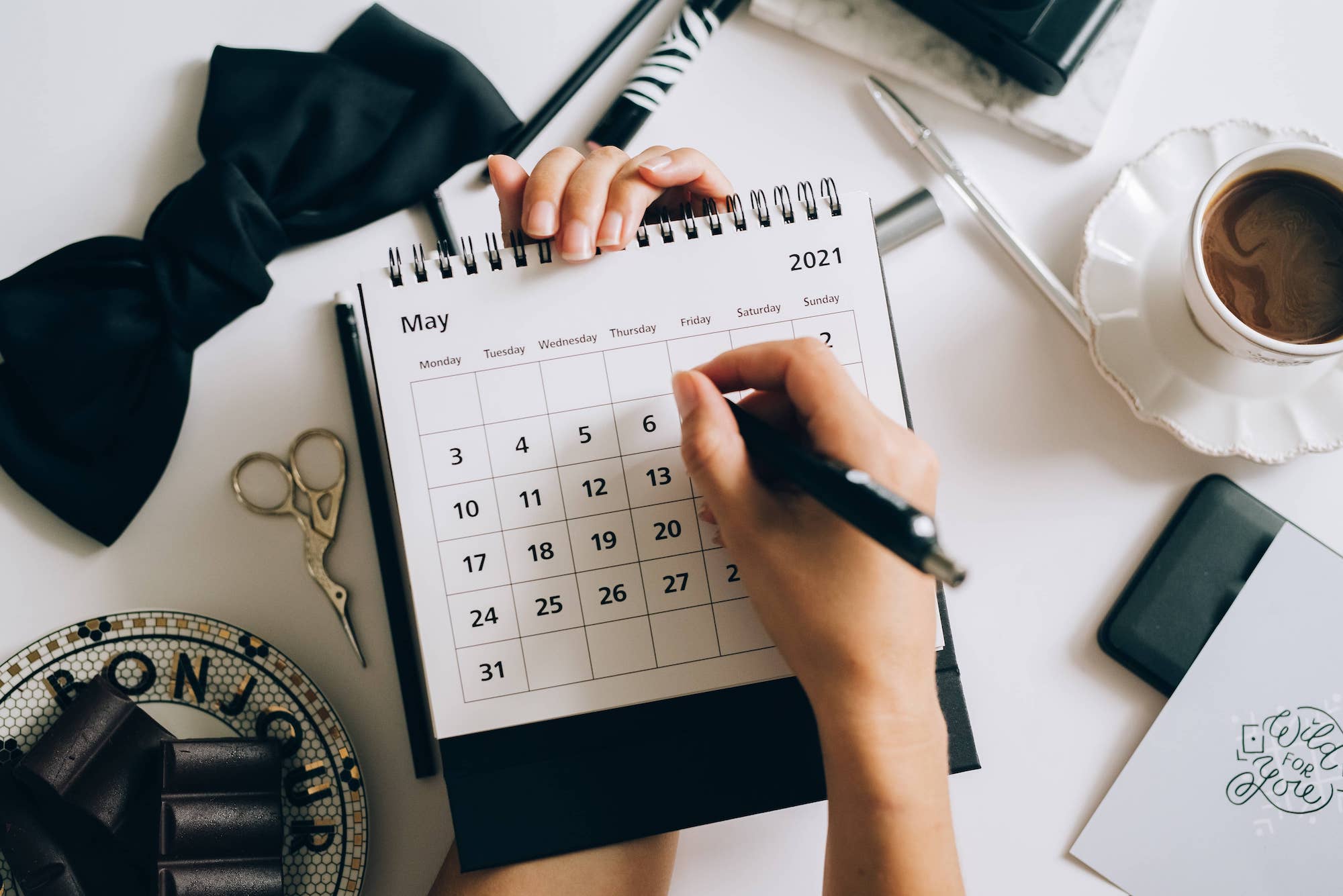Once your period starts, can you tell how many days it will be until you ovulate? Well, not necessarily. Let’s go through the cookie cutter example of how a menstrual cycle goes.
Your period starts on day 1, you ovulate on day 14, and your cycle continues until day 28. If you’re not pregnant, a new cycle will begin with a period on day 1 of the next cycle.
It would be easy if everyone had a textbook cycle but, unsurprisingly, it doesn’t usually work that way. We are all unique, and our cycles are too!

It would be great if everyone had a 28-day cycle but that's just not the case!
What if my cycle isn’t exactly 28 days long – then when do I ovulate?
Your cycle is totally dependent upon changes in your hormone levels. Certain hormones reaching high enough levels will trigger the release of a following hormone, and the pattern continues. If one hormone level is not high enough, it can delay the rest of the cycle.
For example, you need high enough estrogen levels to cause a hormone called LH to be released. Without LH, ovulation will not occur. Many hormones need to reach their peak levels to cause the release of the next hormone and allow the cycle to continue.
If one or more hormones do not reach their optimal levels to allow ovulation to occur the body will continue trying to ovulate until it has successfully done so. If your cycle is longer than 28 days, this may be a sign that your body is taking longer than normal to ovulate. This likely means you're ovulating after cycle day 14.
On the other hand, a cycle shorter than 28 days may mean certain hormones are rising too soon, triggering ovulation to occur before cycle day 14. Additionally, a short cycle can be caused by fewer days than normal after ovulation, which could mean you very well are ovulating on cycle day 14.
As you can see, there are a bunch of different scenarios. Cycle length and when exactly you ovulate depends on the person – meaning being able to figure out when you ovulate is critical!
How can you figure out when you’re ovulating?
Our bodies are amazing and give us clues to indicate what is happening with our hormones throughout the cycle. Estrogen levels are highest before ovulation, which causes the production of fertile cervical mucus.
This mucus can be observed when you go to the bathroom, giving you an indication that ovulation may be near. Fertile cervical mucus is a sign that you're in your fertile or fertility window – the time to have sex if you're trying to get pregnant.
There are many other methods that can help you identify the signs of ovulation, so you can better understand when it's coming.
Cycle tracking apps or ovulation calculators

Cycle tracking apps can help estimate when you should ovulate.
There are apps that track your cycle and estimate or calculate ovulation for you. However, it's important to note that these apps calculate your ovulation date based solely on your average cycle length.
These estimates may not always be accurate as they have no way of knowing your unique hormone levels and patterns.
Ovulation or LH testing
Additionally, there is ovulation testing available. Ovulation tests or ovulation predictor kits (OPKs) can check your urine for certain hormone levels. Proov offers tests to measure estrogen and LH levels, which can both aid in predicting ovulation.
While it may be easier if we all just ovulated on day 14, our bodies and our cycles are unique. Luckily, there are plenty of tools available to help you determine when you ovulate.














